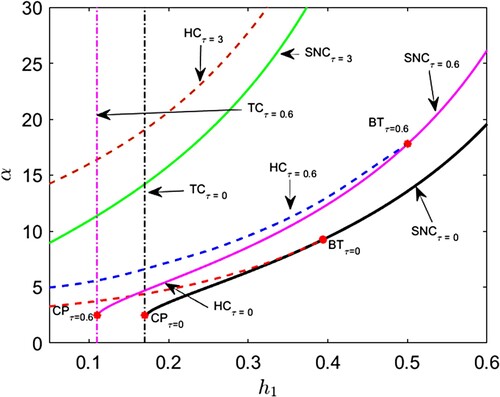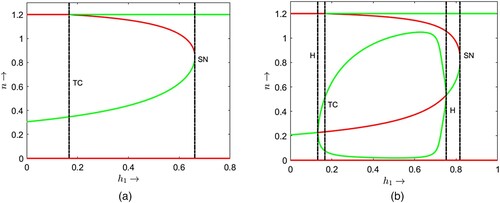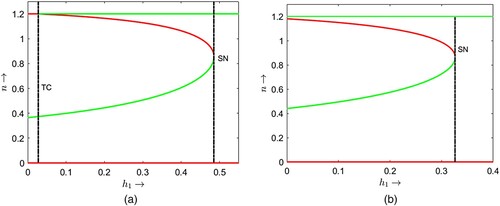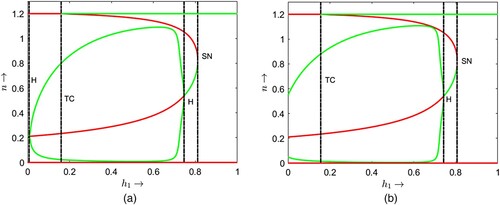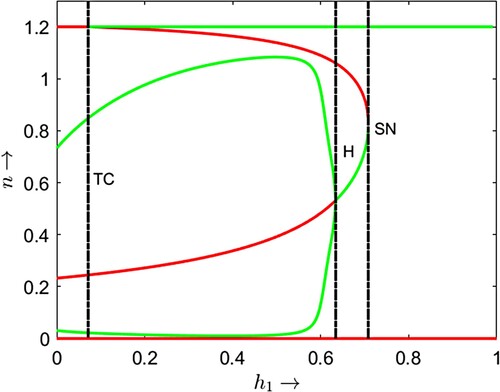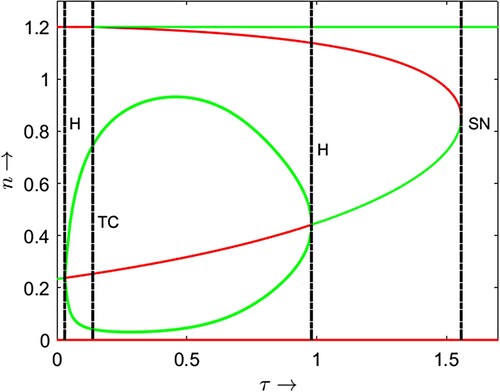Figures & data
Figure 1. Plots of two non-trivial nullclines and
for
and
varying from 0.1 to 0.6. As
increases, the number of equilibrium point changes from 1 to 0.
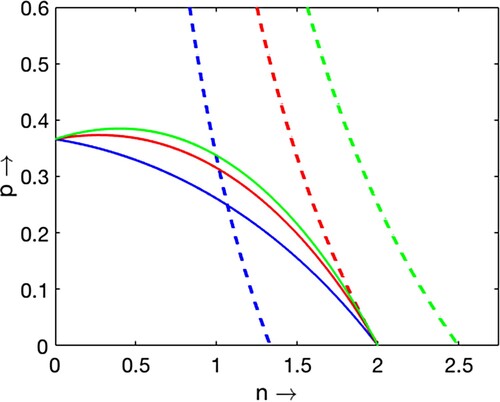
Figure 2. Plots of two non-trivial nullclines and
for
and
varying from 0.1 to 0.75. As
increases, the number of equilibrium point changes from 1 to 0 ‘through 2’.
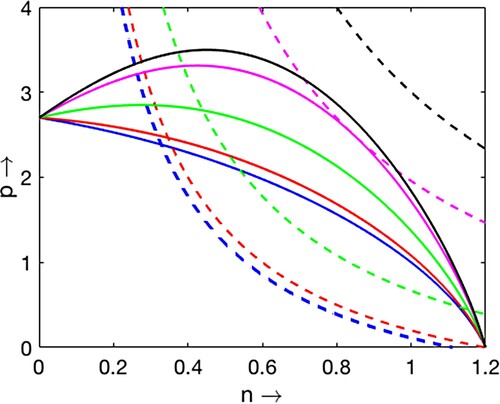
Figure 4. Plots of non-trivial prey nullcline and predator nullcline
for
,
,
,
,
and three different values of τ:
,
,
.
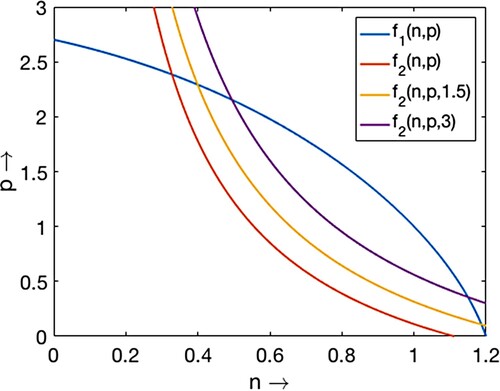
Figure 10. (Shift of bifurcation curves and bifurcation thresholds) . Black and magenta colour solid curves represent saddle node bifurcation curves (SNC) for
and
respectively. Red and blue colour broken curves represent Hopf bifurcation curves (HC) for
and
respectively. Black and magenta colour vertical dash–dot curves represent transcritical bifurcation curves for (TC) for
and
respectively. BT and CP stand for Bogdanov–Takens bifurcation threshold and cusp bifurcation thresholds respectively.
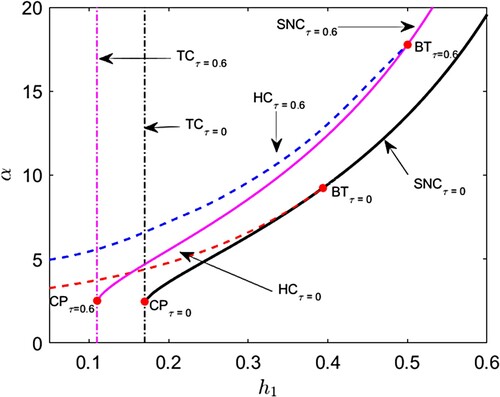
Figure 11. (Shift of bifurcation curves and bifurcation thresholds) . Black, magenta and green colour solid curves represent saddle node bifurcation curves (SNC) for
,
and
respectively. Red, blue and brown colour broken curves represent Hopf bifurcation curves (HC) for
,
and
respectively. Black and magenta colour vertical dash–dot curves represent transcritical bifurcation curves for (TC) for
and
respectively. BT and CP stand for Bogdanov–Takens bifurcation threshold and cusp bifurcation thresholds respectively.
